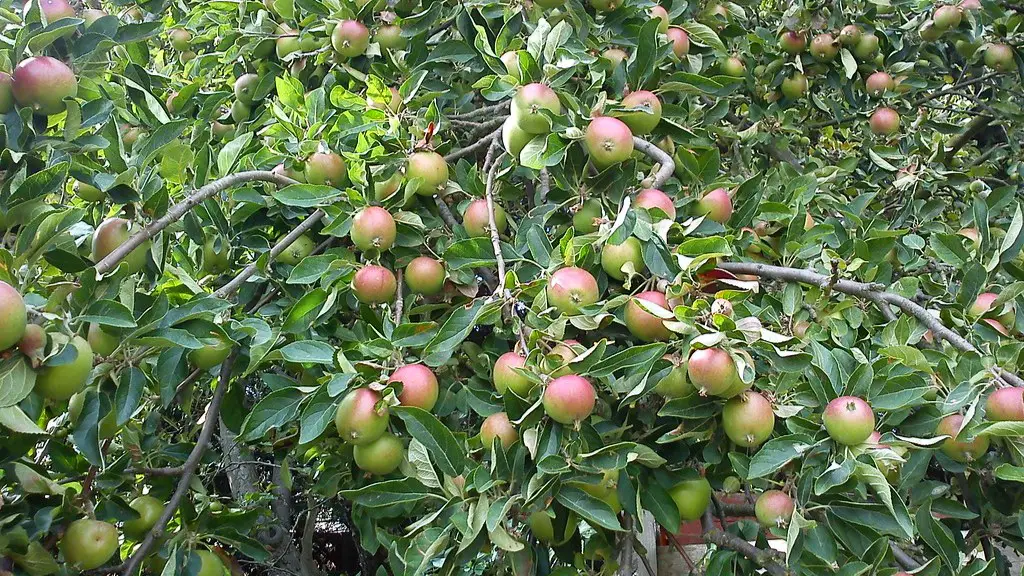A bonsai palm tree is one of the most common varieties of miniature trees created for bonsai art. It has an attractive, compact look with its evergreen foliage and a center trunk that provides a pleasant aesthetic. Bonsai palm trees are well-suited for beginner bonsai gardeners because they are relatively tolerant of fluctuations in moisture levels. However, with just a little bit of extra care, bonsai palm trees can thrive both indoors and outdoors.
The first step to creating a bonsai palm tree is to acquire the trunk. Good quality nursery-grown palms are best suited for bonsai art. According to experts in the field, a healthy trunk is the foundation for a beautiful bonsai tree. Avoid ones with branch damage or pest infestations, since this could affect the longevity of the tree.
The second step is to choose a pot and soil mix. Pots that are shallow and wide are usually best for bonsai palm trees, and soil mix should consist of at least one-third inorganic material and two-thirds organic material. The organic part should include fine-grained soil and coarse sand. Experts also recommend adding fertilizer, such as fish emulsion, to ensure that the palm tree receives enough nutrients.
The third step is to root-prune the tree. Before planting, give the trunk a slight tap on the top to loosen the roots and allow for easier placement in the pot. Then, carefully remove any dead or diseased roots and root-ball the tree by trimming the ends of the roots with sharp shears. This will help the tree establish itself in the new pot.
The fourth step is to water the tree. If the tree is kept in a pot with adequate drainage, the soil should remain evenly damp. If you live in a hotter and drier climate, it is important to water frequently to prevent the leaves from wilting or turning yellow, while avoiding excess water that could cause root rot.
The final step is to prune the top. Pruning the top of the tree will promote a compact, ornamental shape, while avoiding over-pruning that could damage the tree. It is recommended to prune the top of the tree regularly with sharp shears to ensure that it remains in good health.
By following these five simple steps, you can create a beautiful and healthy bonsai palm tree that will thrive in your garden. With the right care and attention, it will remain a lovely centerpiece for years to come.
Light and Temperature
In order for bonsai palm trees to stay healthy, it is important to provide them with the right amount of light and temperature. According to a study conducted by the Royal Horticulture Society, bonsai palm trees prefer plenty of daylight and warm temperatures. They also tolerate brief periods of shade but should be kept away from prolonged exposure to direct sunlight, which can cause dryness, leaf burn and even death.
Bonsai palm trees also require plenty of fresh air circulation. Experts recommend placing the tree in a well-ventilated area, such as a spot near an open window, to ensure that the tree is receiving the necessary amount of air. In the wintertime, bonsai palm trees should be brought indoors and kept in a south-facing location.
Humidity and Fertilizer
Humidity is another important factor when taking care of bonsai palm trees. Since these trees thrive in semi-arid and tropical environments, it is important to keep the relative humidity above 40 percent. An easy way to ensure sufficient humidity is to mist the trunk, branches and leaves with a mister or spray bottle at least once a day. If the humidity level is particularly low, experts recommend using a humidity tray or misting the tree twice a day.
Furthermore, bonsai palm trees require regular fertilizing to stay healthy and vigorous. Fertilize the tree with a high-quality nitrogen-rich fertilizer at least once a month during the growing season. During the winter, it is recommended to reduce the amount of fertilizer to one application every four to six weeks to avoid over-fertilization.
Re-Potting
Bonsai palm trees need to be re-potted every two to four years for optimal growth. Re-potting will help to keep the tree healthy by replenishing the nutrition in the soil and providing better drainage. Before re-potting, carefully remove the root ball from the old pot and prune the roots with sharp shears. After re-potting, water the tree thoroughly and avoid direct sunlight for the first few days.
Pests and Diseases
Pest and disease prevention is essential when caring for bonsai palm trees. This can be done by regularly checking the tree for any signs of insect infestation or fungal diseases. In the event that an infestation occurs, it is recommended to spray the tree with neem oil or another insecticide to eradicate the pests. For fungal diseases, a fungicide spray can be used to control the spread.
By following these simple steps, you can ensure that your bonsai palm tree will remain healthy and beautiful. With the right care and attention, your bonsai palm tree will be a delightful centerpiece in your garden for many years to come.



